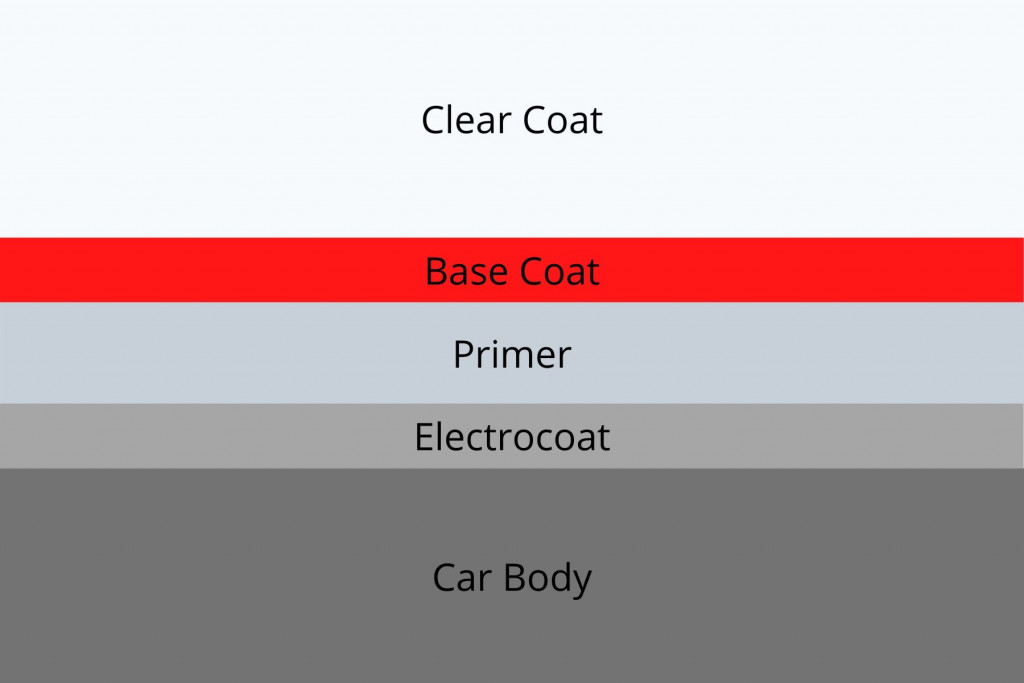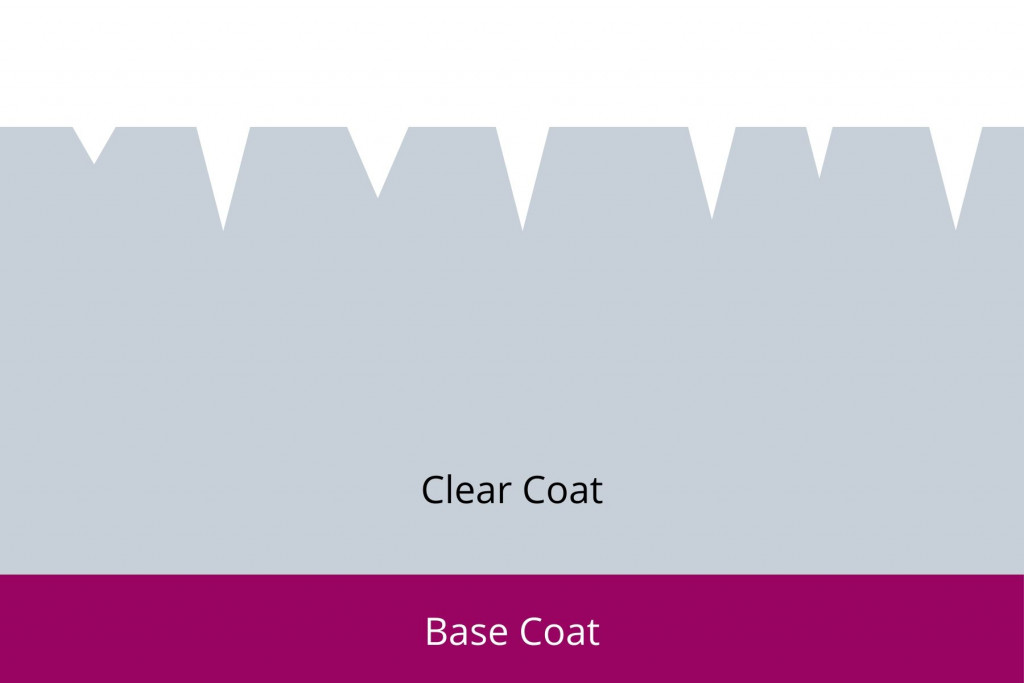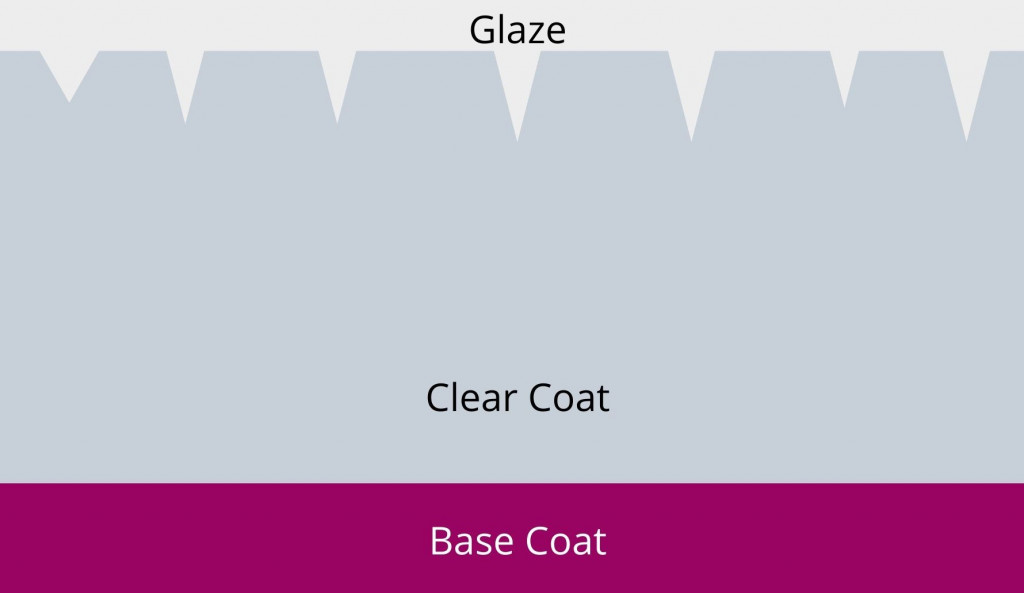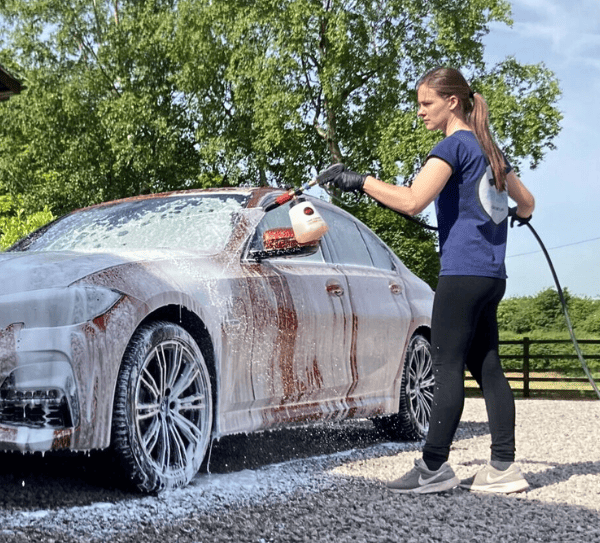If you’re getting into detailing and you want your car to look slick and gloss, then you’ve probably heard of waxes and glazes. But what do they actually do? And what’s the difference between them?
In this article, I’ll be comparing what glazes and waxes do, how they actually work, and how to use them to get the best results. So let’s get started.
The Quick Answer
Glazes and waxes both make a car look more shiny by filling in minor swirl marks in the paint, however glazes are more effective at this. The main purpose of a wax is to protect the paint from the environment, whilst glazes do not add protection. A wax should be applied on top of a glaze for best results.
What is a Glaze?
Put simply, glazes fill in minor imperfections and scratches in your car’s clear coat which creates a smoother surface. This means light can reflect evenly, and the result, is a glossier and shinier finish.
To understand how glazes do this, you need to know a bit about the structure of your car’s paint.

Your car’s finish has several layers. The base coat, is the colour of your car. The clear coat sits on the top.
The clear coat is very important because not only does it make your car look glossy, it also protects the base coat from UV rays and damage which causes it to fade over time.
In order for your car to look super shiny. The clear coat should be completely flat.
However, in reality the clear coat looks more like this.

Unfortunately, these minor scratches (otherwise known as swirl marks) can be caused by poor wash technique. For example, using sponges instead of microfiber wash mitts, or using bathroom towels to dry the car instead of plush microfiber towels.
Check out this complete guide to washing your car without causing scratches.
The scratches can be seen clearly in direct sunlight. However, even when it’s not sunny, they make your car look much duller because the clear coat isn’t flat anymore.
Glazes fill in these scratches, hence creating a smoother and flatter surface which makes the car look shinier.

Glazes are super simple to use. They are usually just applied using either a machine polisher or by hand, left to dry for 5-10 minutes and then buffed off to produce a high shine.
Check out my complete guide to glazes to learn more about these products.
What Does Waxing do Then?
Waxing is very different to glazing, although it can make the car look glossier as well.
Waxes are a form of paint protection. They sit on top of the clear coat and help to protect it from things like dust, dirt, UV rays, bugs, tree sap and tar. Protecting your paint is essential if you want to preserve your clear coat, which of course helps to protect the base coat (colour coat).
Every car should have a layer of paint protection at all times. There are three main forms of paint protection: waxes, sealants and ceramic coatings.
Waxes are the least durable, but offer a warm deep shine. Sealants are more durable and have a colder look. Whilst ceramic coatings are incredibly durable and can last years before needing to be reapplied.
Sealants and ceramic coatings are a little more complicated to apply, and need to be applied to completely bare paint to bond properly. Wax is a little less fussy because it doesn’t need to actually bond to the paint that well, it really just sits on top (the surface still needs to be clean though).
Waxes make your car look shinier because they fill in some of the clear coat scratches that we discussed earlier. Waxing has similar filling effect to a glaze, but the focus is more on protecting the paint instead.
Key Differences Between Waxes and Glazes
Okay, so now you know a little more about the waxes and glazes, let’s talk about the more specific differences and similarities.
Similarities
- Waxes and glazes both help to increase the glossiness of the paint by filling in minor clear coat imperfections.
- The application is very similar. In most cases, you apply using a soft microfiber or foam pad, wait for it to dry and then buff it off using a microfiber towel.
Differences
- Glazes do not protect the car’s clear coat. The primary aim of a wax is to protect your car’s paint.
- Glazes have much more filling power than waxes, so they’ll help to create a glossier finish by filling in scratches and swirl marks in your car’s clear coat.
The Application Process
So now you know what the similarities and differences between waxes and glazes actually are, here’s how they should be applied, and in which order.
- The paint should be prepped by washing thoroughly, decontaminating if necessary (using clay or iron removers), and then performing paint correction steps if required.
- Once the paint is prepped, the glaze should be applied, left to dry and buffed off using a microfiber towel.
- Then the wax should be applied and the excess buffed off.
It’s very important to apply the glaze before the wax. The wax should always go on top, because it’s what protects the surface underneath.
It’s usually not recommended to use a glaze underneath a sealant, and it definitely should not be used under a ceramic coating. This is because sealants and ceramic coatings need to properly bond to the paint and the glaze gets in the way.
More FAQs
Don’t worry if you’ve still got some more questions. Here are some answers to the most FAQs about glazes and waxes.
What’s the difference between polishing and waxing?
Polishing and waxing are very different things. Polishing is used to remove a layer of your car’s clear coat to remove scratches. Waxing is used to protect your car’s finish.
What’s the difference between glazing and polishing?
Put simply, glazes fill in scratches, whereas polishes actually remove them. Check out this comparison between glazes and polishes to learn more about the differences.
Should you polish before glazing or waxing?
It’s not always necessary to polish your car every time you use a wax and it is not necessary before using a glaze. Polishing should only be performed when necessary. Check out this article I’ve written that will tell you when you should polish your car.
What’s the best glaze for cars?
My favourite glaze is called Blackhole by a brand called PoorBoy’s. It’s incredibly easy to apply and remove and does an excellent job of filling in clear coat scratches and swirls. Plus it smells pretty nice too!
What’s the best wax for cars?
Check out my paint protection favourites for more info.
Thanks for reading! I hope you’ve found this article helpful. Don’t forget to check out the rest of the blog to learn more about getting your car looking its best.

